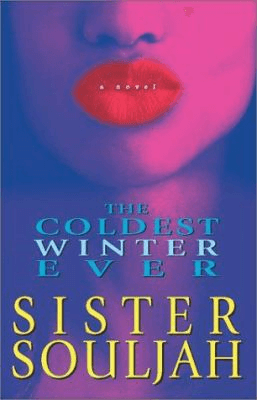Eleventh Stack began publishing content in 2008. That’s eight years of awesome content! We’re highlighting some of our old favorites for Throwback Thursday. The post “Street Lit on the Tough Streets of Troy Hill” originally appeared on December 11, 2012.
Sister Souljah, already a popular rapper and political activist, published The Coldest Winter Ever in 1999, there wasn’t much to compare it with. Its naturalistic depiction of inner-city life, crime, and drug use were reminiscent of Donald Goines’s (Dopefiend [1971] and Whoreson [1972]) and Iceberg Slim’s (Pimp: The Story of My Life [1969] and Mama Black Widow: A Story of the South’s Black Underworld [1969]) pulp novels of the late sixties and early seventies, albeit with a different moral and social agenda.

And hip-hop rhythms and language were already making a huge impact on both popular culture at large and in the book market; Tupac’s The Rose That Grew from Concrete, for example, was also released in 1999. But there was something about Souljah’s combination of pulp-style realism with contemporary inner-city culture and a positive moral message that resonated with readers and brought street lit into popular focus as a unique genre.**
At around the same time Souljah was getting written up in the New York Times, another author, Teri Woods, was selling books out of the trunk of her car on 125th Street in Harlem. Having been rejected by every publisher to whom she submitted her first novel, True to the Game, she eventually printed, bound and sold, one-by-one, over a hundred thousand copies of the book. Several of her books are now considered classics of the genre, and she continues to self-publish her own books and independently publish other authors’ books under her Teri Woods Publishing imprint.
And thus a genre was born, and street lit has continued to mature over the past decade and a half. In her excellent Reader’s Advisory Guide to Street Literature (which I should mention is the source of most of the information in this post), Vanessa Irvin Morris names some characteristics of contemporary street lit: fast-paced stories; naturalistic depiction of poverty, drug abuse and substandard housing; interpersonal relationships that involve abuse, betrayal and other complications; and themes of surviving the streets and overcoming difficult circumstances.***
Morris also proposes a canon of sorts for the genre, which would be a good starting point for anyone interested in giving street lit a shot.
- Tyree, Omar Flyy Girl
- Holmes, Shannon B-More Careful
- Stringer, Vickie Let That Be the Reason
- Sapphire Push
- Foye, K’wan Gangsta’
- Relentless Aaron Rappers ‘R in Danger
- Brown, Tracy Black: A Street Tale
- Clark, Wahida Thugs and the Women Who Love Them
- Woods, Teri and Kwame Teague Dutch
- Turner, Nikki A Hustler’s Wife
It’s obvious that fans identify with these books in a big way; I mean, they found their way to readers even though they were largely dismissed by publishers. But if you are a skeptic about the literary value of street lit,**** I’ll leave you with this quote from Teri Woods’ introduction to The Reader’s Advisory Guide to Street Literature:
“These street-lit books are representing a voice of what was never to be spoken or told. And it is a voice that you hear very well. Not everyone can hear the cries of the inner-city streets. Not everyone cares to understand the tears on a Black face and what they represent or how to make them go away. The new-wave genre of street lit will always remind the human race of a people who were supposed to be forgotten, swept under a rug, put in a box — better yet a cell — never to have a voice, never to cry out, and never able to speak out against the injustice we live in, see, experience in our everyday life just because of our demographics.”
-Dan
Souljah On
Read The Coldest Winter EverDan is a librarian who works on outreach, partnerships, and all sorts of other library work. If he managed to finish half of the books (mostly big novels and nonfiction) he starts, he’d be pretty well-read. Alas, most weeks the poems and restaurant review in The New Yorker will have to suffice.
**One could question, of course, whether Coldest Winter is in fact a genre book at all or whether it should reside on the shelf in the general fiction section, say between Upton Sinclair and John Steinbeck. Librarians love arguing about stuff like that, and if you do, too, I invite you to do so in the comments section below.
***None of this is new in literature. In fact, Morris points out similarities between the contemporary street lit of, say, Teri Woods, and Stephen Crane’s Maggie: A Girl of the Streets: the authors’ use of vernacular, depiction of urban poor, boundary-pushing depiction of sex and substance abuse and difficulty finding a publisher. I wonder how many 10th grade American Lit anthologies excerpt True to the Game!
****I have to say that if you saw how these books can help someone who never read for pleasure turn into an avid reader, I think you’d be convinced. And, seriously, they’re just like Shakespeare with more cussing.
